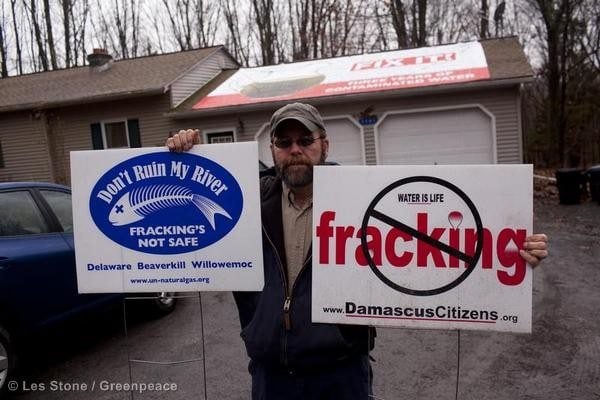As with any industrial process used for the first time on such a massive scale, there have been many unpredicted negative consequences. One such unintended byproduct is earthquakes, which have been caused by the underground disposal of fracking wastewater. Earthquakes in Colorado, Oklahoma, Ohio and Arkansas the past few years have all been tied to fracking wastewater injection wells.
Due to the backlash from nearby residents and local governments over the illegal dumping of contaminated frack fluid, many companies now inject unwanted leftover frack fluid into underground disposal wells. This practice is common in the western shale plays, where the geology is favorable. In 2012 fracking in the U.S. produced nearly 280 billion gallons of this chemically-laden fluid and the EPA reports there are over 155,000 oil and gas wastewater wells active nationwide. Geologists have long associated these deep wells with earthquakes.
In Eastern plays, like the Marcellus Shale, the geology does not allow for underground wastewater injection, so fracking wastewater that is not spread on roads or sent to treatment plants is often trucked out of state (e.g. to Ohio) for disposal in licensed commercial underground injection wells – a process which seismologists believe was responsible for an uncharacteristically large number of earthquakes that occurred in the region in 2011. (The injected water lubricates fault lines, causing them to slip.) Fracking wastewater disposal has also been linked to earthquakes in other states, though oil and gas producers are exempt from federal environmental law designed to prevent industrial waste injection wells from triggering earthquakes.
Though the industry claims otherwise, the link between fracking and earthquakes has been recognized by EPA since at least 1990, when it recognized fracturing and fluid injection as earthquake triggers and recommended extensive seismic monitoring.(Andrew Nikiforouk, “Fracking and Quaking: They’re Linked: And scientists, the military, and frackers themselves have known it for years,” The Tyee (B.C.) 11/18/2011
1967 to 2000, there were 21 earthquakes above magnitude 3.0 on average per year on Oklahoma. Since 2010, the start of the fracking boom, Oklahoma has averaged over 300 earthquakes over 3.0 magnitude.
Youngstown, Ohio provides a similar example. Prior to 2011, Youngstown, population 65,405, had never experienced an earthquake, at least not since records were first kept by Europeans who settled the region in 1776. Nonetheless, this lack of seismic activity changed dramatically when the area recorded 100+ tremors over the course of 2011, including a 3.9 quake that shook the town on New Year’s Eve. Those earthquakes, according to a study by Won-Young Kim of Columbia University, published in the Journal of Geophysical Research, were the result of a pesky injection well known as Northstar 1.
“Earthquakes were triggered by fluid injection shortly after the injection initiated – less than two weeks,” Dr. Won-Young Kim told LiveScience. (Frack, Rattle and Roll, Joshua Frank)

